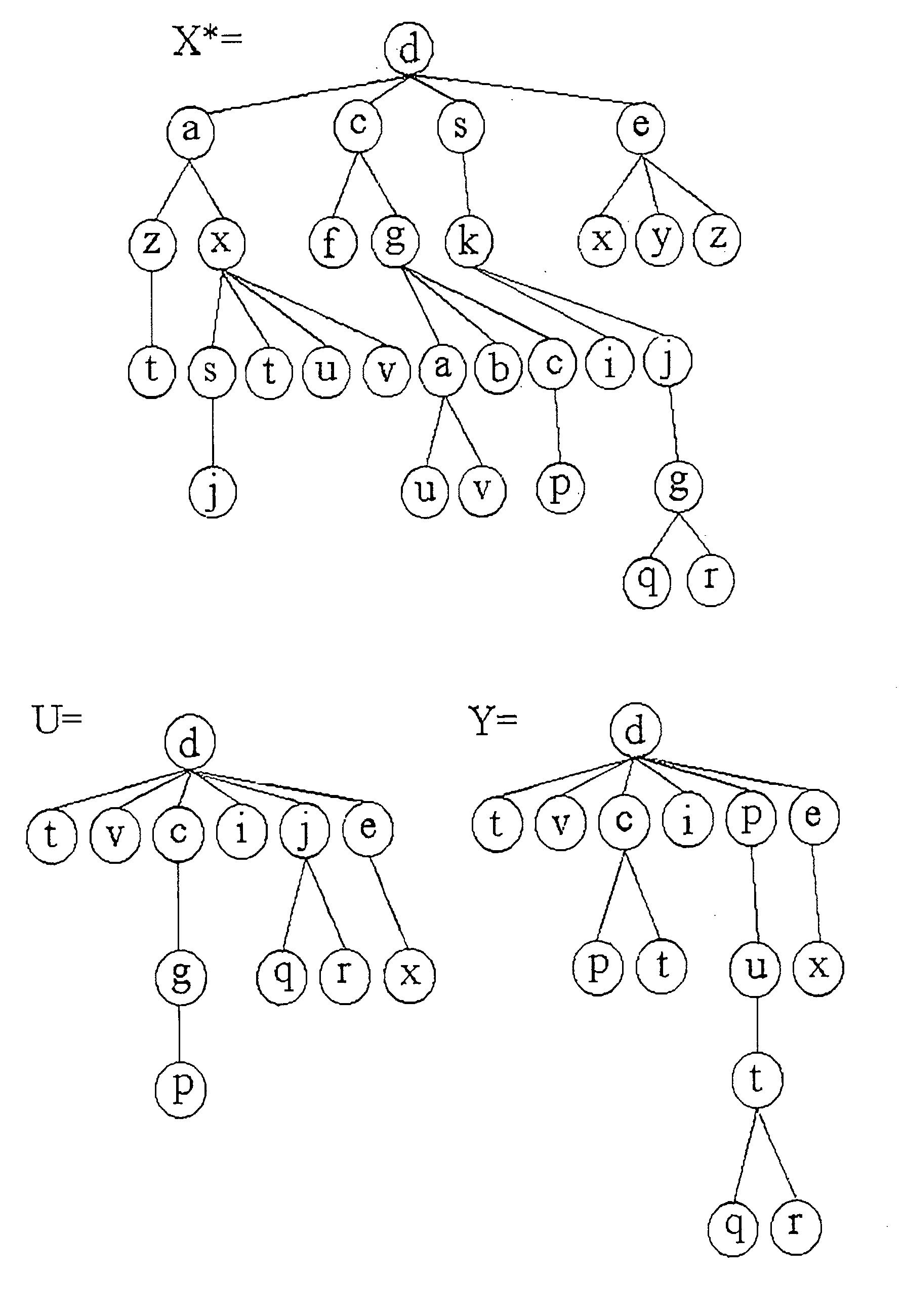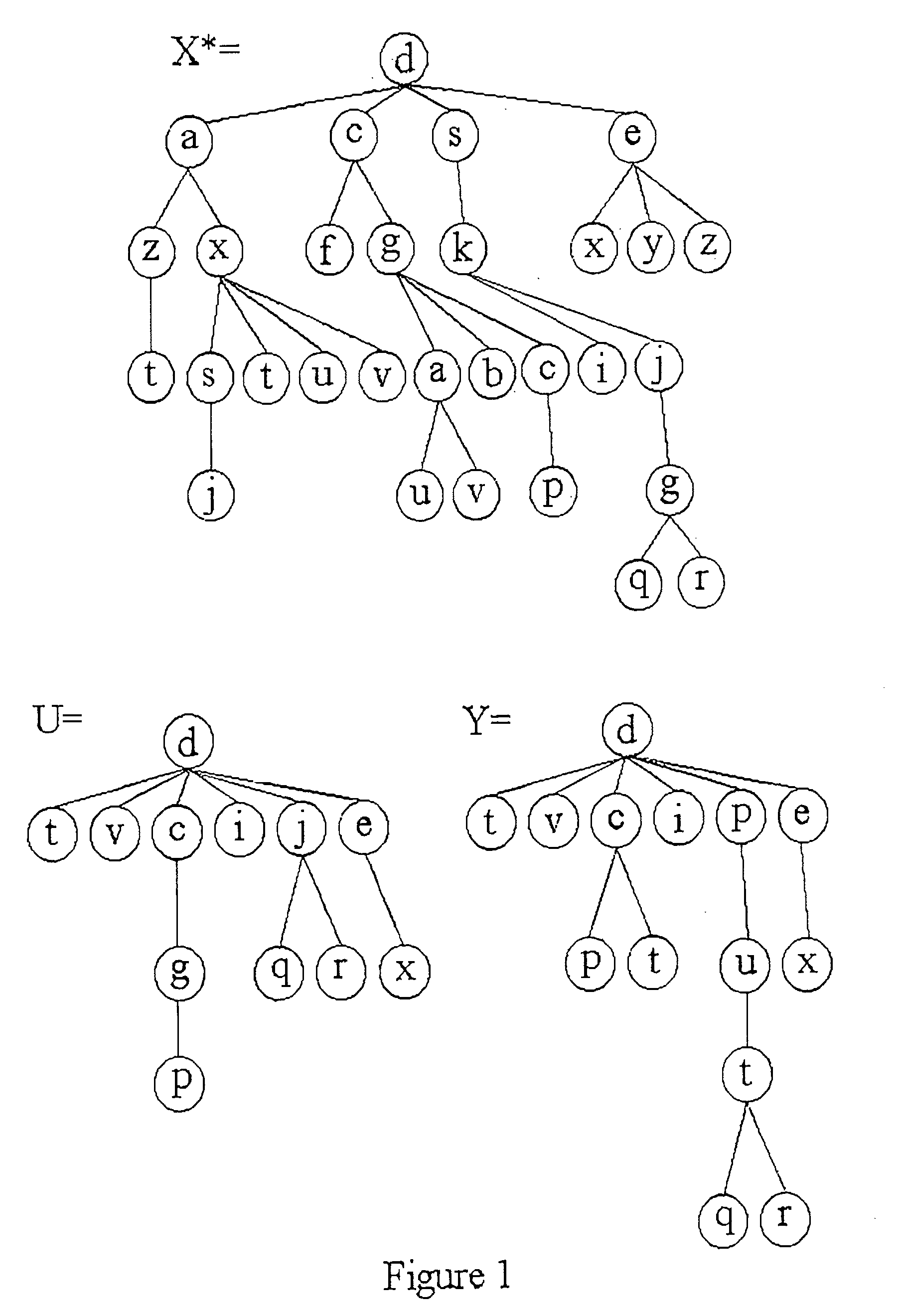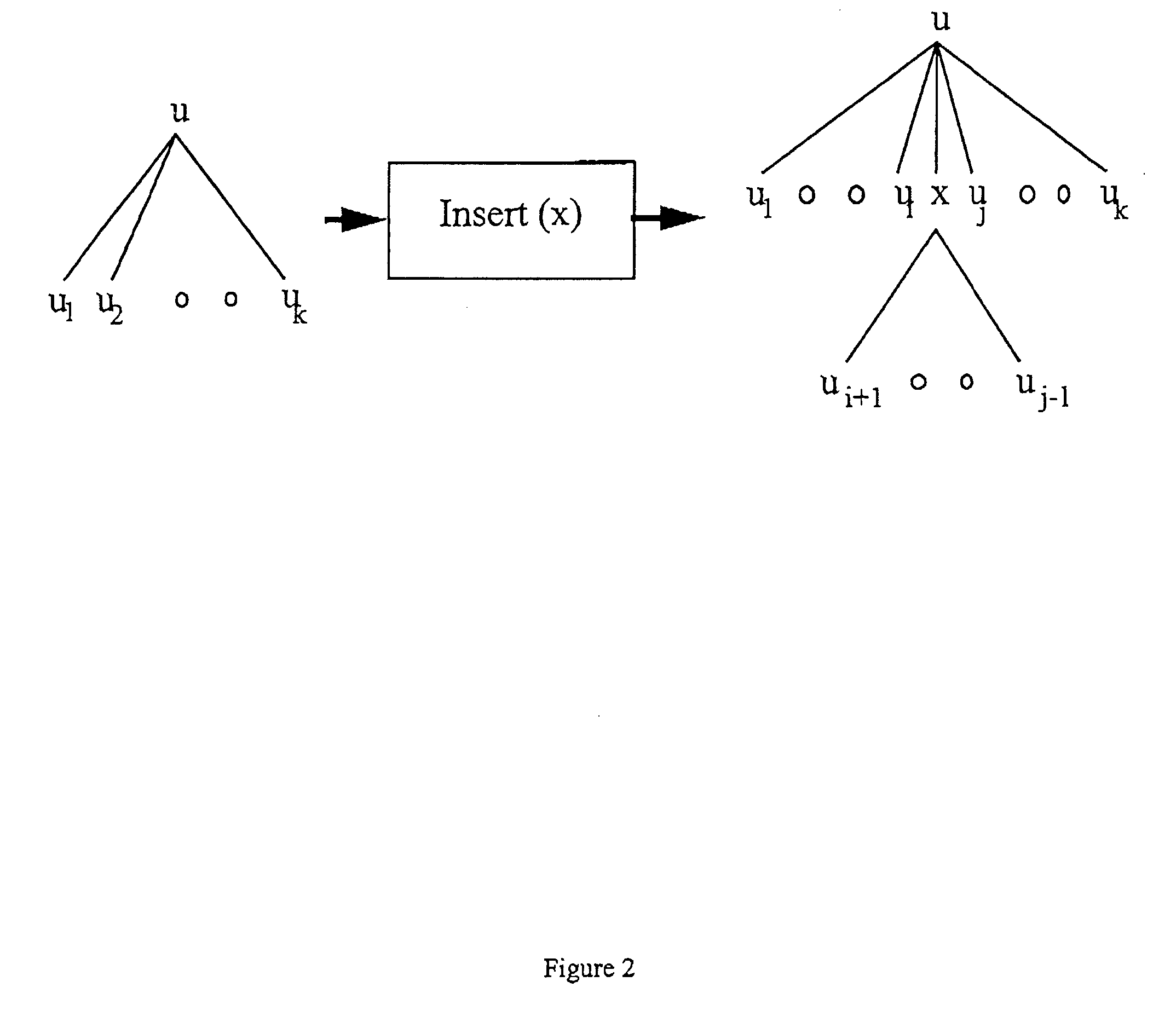Method for recognizing trees by processing potentially noisy subsequence trees
a tree recognition and subsequence technology, applied in the field of tree recognition by processing potentially noisy subsequence trees, can solve the problem that the algorithm of lu [lu79] cannot solve the problem of trees of more than two levels
- Summary
- Abstract
- Description
- Claims
- Application Information
AI Technical Summary
Problems solved by technology
Method used
Image
Examples
example i
[0101] Tree Representation
[0102] In this implementation of the algorithm we have opted to represent the tree structures of the patterns studied as parenthesized lists in a post-order fashion. Thus, a tree with root `a` and children B, C and D is represented as a parenthesized list L=(B C D `a`) where B, C and D can themselves be trees in which cases the embedded lists of B, C and D are inserted in L. A specific example of a tree (taken from our dictionary) and its parenthesized list representation is given in FIG. 6.
[0103] In our first experimental set-up the dictionary, H, consisted of 25 manually constructed trees which varied in sizes from 25 to 35 nodes. An example of a tree in H is given in FIG. 6. To generate a NSuT for the testing process, a tree X* (unknown to the classification algorithm) was chosen. Nodes from X* were first randomly deleted producing a subsequence tree, U. In our experimental set-up the probability of deleting a node was set to be 60%. Thus although the av...
example ii
[0110] Tree Representation
[0111] In the second experimental set-up, the dictionary, H, consisted of 100 trees which were generated randomly. Unlike in the above set (in which the tree-structure and the node values were manually assigned), in this case the tree structure for an element in H was obtained by randomly generating a parenthesized expression using the following stochastic context-free grammar G, where,
[0112] G=, where,
[0113] N={T, S, $} is the set of non-terminals,
[0114] A is the set of terminals--the English alphabet, G is the stochastic grammar with associated probabilities, P, given below:
[0115] T.fwdarw.(S$) with probability 1,
[0116] S.fwdarw.(SS) with probability p.sub.1,
[0117] S.fwdarw.(S$) with probability 1-p.sub.1,
[0118] S.fwdarw.($) with probability p.sub.2,
[0119] $.fwdarw.a with probability 1, where a .di-elect cons. A is a letter of the underlying alphabet.
[0120] Note that whereas a smaller value of P.sub.1 yields a more tree-like representation, a larger value...
PUM
 Login to View More
Login to View More Abstract
Description
Claims
Application Information
 Login to View More
Login to View More - R&D
- Intellectual Property
- Life Sciences
- Materials
- Tech Scout
- Unparalleled Data Quality
- Higher Quality Content
- 60% Fewer Hallucinations
Browse by: Latest US Patents, China's latest patents, Technical Efficacy Thesaurus, Application Domain, Technology Topic, Popular Technical Reports.
© 2025 PatSnap. All rights reserved.Legal|Privacy policy|Modern Slavery Act Transparency Statement|Sitemap|About US| Contact US: help@patsnap.com



